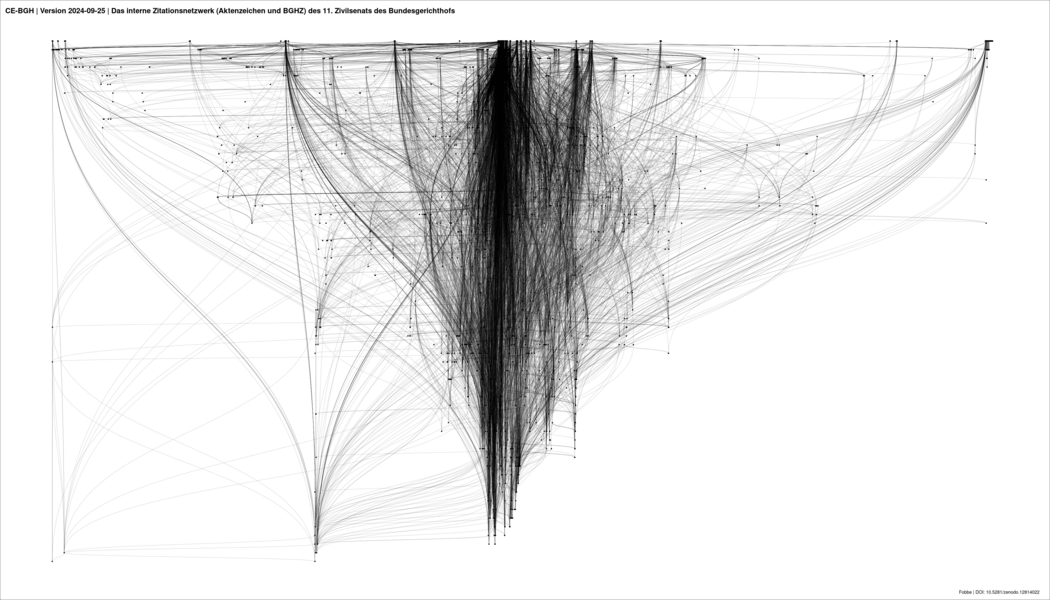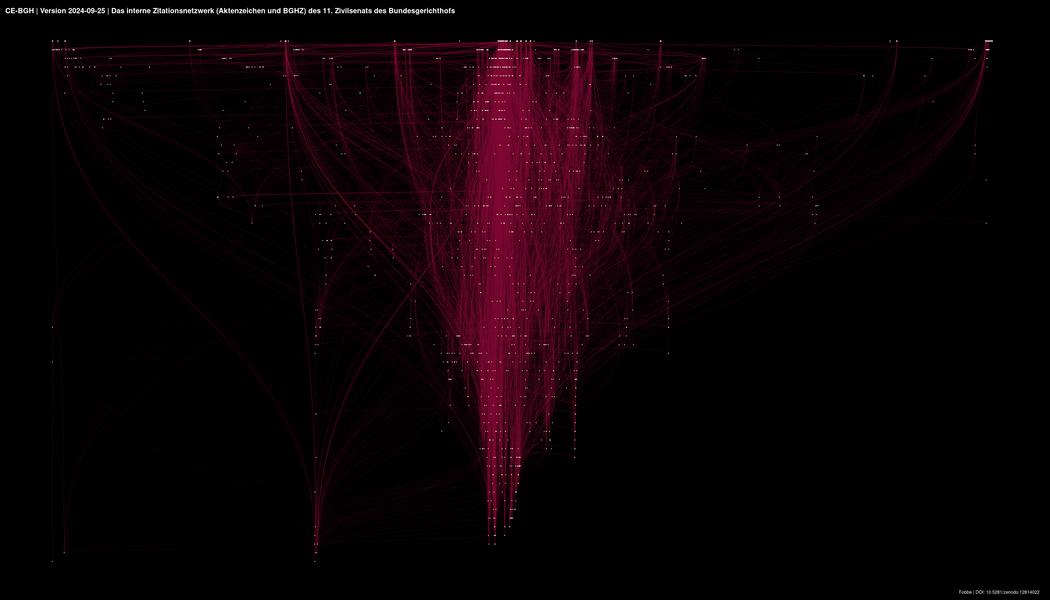Overview Link to heading
New citation data available! I’ve updated the Corpus of German Federal Court of Justice decisions and it now includes a specialized variant containing all citations to its own decisions, extracted from the text of those decisions.
The scope of the citation network in Version 2024-09-25 is:
- ca. 600,000 individual citations
- ca. 440,000 edges (citation connections weighted by number of individual citations)
- ca. 100,000 nodes (Aktenzeichen, BGHZ und BGHSt)
As of now this variant is in beta testing. It contains the following types of citations:
- Citations from Aktenzeichen to Aktenzeichen
- Citations from Aktenzeichen to BGHZ
- Citations from Aktenzeichen to BGHSt
Aktenzeichen (docket number) citations are less accurate than decision citations (which require a date in addition to the Aktenzeichen for unique identification) However, 91.78% of all Aktenzeichen in the CE-BGH dataset are unique (independent of the date) so this is a reasonable approximation. I intend to add decision-level citation support in the future.
Some Network Statistics Link to heading
| Number of Nodes | Number of Edges | Strength (Out) | Mean Degree | Max Degree | Min Degree |
|---|---|---|---|---|---|
| 101,474.00 | 441,884.00 | 593,154.00 | 8.71 | 559.00 | 0.00 |
Network Diagram for the 11th Civil Senate (Banking Senate) Link to heading

This diagram visualizes the citation network extracted from the decisions of the 11th Civil Senate, also known as the Banking Senate. It represents only a subset of the data. The complete network is probably too large to be visualized in any single diagram.
The visualization algorithm is Sugiyama.
The small white dots are individual docket numbers or BGHZ decisions, the connecting lines are citations (any number). Multiple citations between the same nodes are not shown in the diagram, but the weights are available in the network data.
The network is hierarchical, because newer decisions can only cite older decisions, not the other way around. The diagram is read from top to bottom.
Because of the strong connections between certain decision clusters one might call them “lines of jurisprudence”, but the research on this subject is still in its infancy. The shape may simply be an artifact of the force-directed layout.
